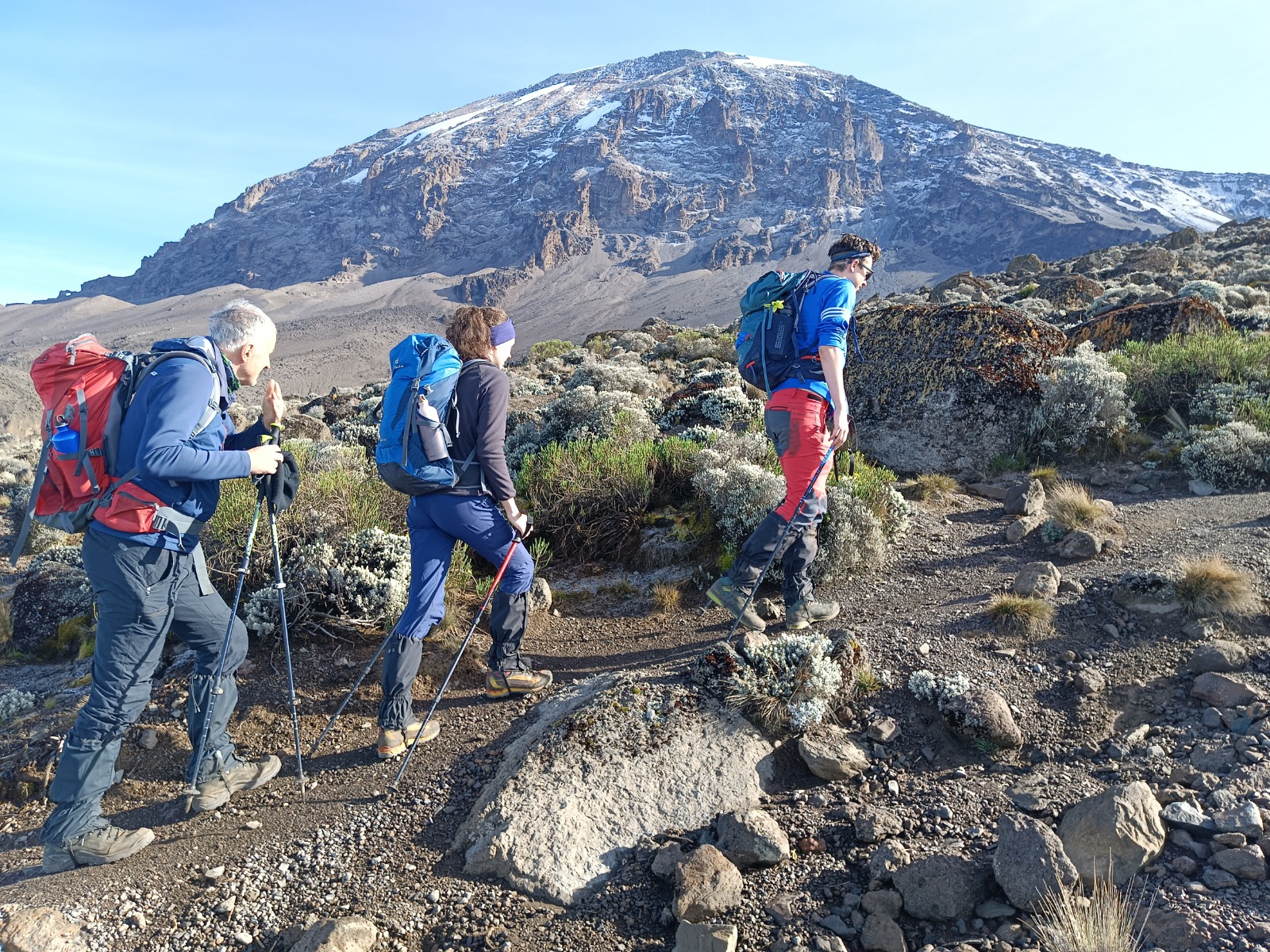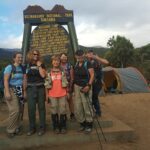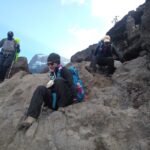Climbing Mount Kilimanjaro is an adventure of a lifetime, but it’s crucial to understand the costs involved before planning your ascent. While the price can vary depending on several factors, this guide breaks down what you need to know to budget for a successful Kilimanjaro trek.
Factors Influencing Kilimanjaro Trek Costs
The cost of climbing Kilimanjaro can range significantly. Here’s a detailed look at the main factors that influence the price
- Route Choice
Kilimanjaro offers several routes to the summit, each varying in difficulty, duration, and cost:
- Marangu Route (5-6 days): Known as the “Coca-Cola Route,” it’s one of the least expensive options due to its shorter duration and use of shared huts.
- Machame Route (6-7 days): A popular choice, it requires camping gear and tends to be slightly more expensive due to longer days.
- Lemosho and Northern Circuit Routes (8-10 days): Longer routes with better acclimatization opportunities, making them more costly but increasing summit success rates.
- Rongai Route (6-7 days): The only route approaching from the north, slightly more expensive due to logistical factors.
Budget Impact: Longer routes are more expensive due to increased park fees, guide and porter wages, and food supplies.
- Number of Days on the Mountain
The duration of your climb affects the total cost. A longer climb means additional costs for food, gear, park fees, and wages for guides and porters.
Budget Impact: A 5-day climb is cheaper than a 7-day or 9-day trek, but shorter treks may impact your chances of reaching the summit due to inadequate acclimatization.
- Level of Service
The quality of service and support provided by your tour operator plays a significant role in the overall cost
- Budget Operators: Basic services with fewer guides and lower-quality camping gear. Prices can be under $2,000, but safety and support may be compromised.
- Mid-Range Operators: Better food, equipment, and a good ratio of guides to climbers. Costs range from $2,500 to $4,500.
- Luxury Operators: Top-tier services with high-quality equipment, private toilets, gourmet meals, and experienced guides. Prices can exceed $5,000 to $8,000.
Budget Impact: Mid-range options offer a balance between cost and quality, while budget operators may save money but could risk safety and comfort.
- Group Size
The number of people in your trekking group affects the per-person cost. Larger groups usually benefit from lower individual costs due to shared expenses.
Budget Impact: Solo climbs are more expensive, while group climbs reduce the per-person cost.
- Seasonal Variations
Prices can vary depending on the time of year. High season (June to October, December to February) generally has higher prices due to increased demand, while low season (March to May) may offer lower rates.
Budget Impact: Trekking during the low season can save money but comes with higher chances of rain and challenging conditions.
- Equipment Rentals
Many trekkers opt to rent gear, which can add to the overall cost. Common rental items include:
- Sleeping bags: $30 – $50
- Trekking poles: $10 – $20
- Warm jackets: $50 – $100
- Gaiters, gloves, and hats: $10 – $30
Budget Impact: Renting equipment is often cheaper than buying, especially if you’re unlikely to use it after the trek.
- Park Fees
Kilimanjaro National Park charges substantial fees, which are included in most tour packages:
- Conservation Fees: Around $82 per person, per day.
- Camping Fees: $60 per person, per night (if camping).
- Hut Fees (for Marangu Route): $60 per person, per night.
- Rescue Fees: $20 per person.
- Guide, Porter, and Crew Fees: Included in tour costs.
Budget Impact: Park fees are fixed, making up a significant portion of the total trek cost.
Cost Breakdown for a Kilimanjaro Climb
Here’s a general breakdown of costs for different types of Kilimanjaro treks:
Budget Trek: $1,500 – $2,500
- Shorter routes like Marangu.
- Basic camping or huts.
- Lower guide-to-climber ratio.
- Basic food and equipment.
- Limited safety gear.
Mid-Range Trek: $2,500 – $4,500
- Popular routes like Machame or Lemosho.
- Higher-quality camping gear.
- Better food and additional safety equipment.
- Higher guide-to-climber ratio for better support.
Luxury Trek: $5,000 – $8,000+
- Longer routes with acclimatization days.
- Luxury tents, private toilets, and high-quality meals.
- Experienced guides and professional porters.
- Portable showers, private chefs, and high-end equipment.
- More personalized and comfortable experience.
Additional Costs to Consider
In addition to the base package, several other costs should be considered:
- Flights to Tanzania
Round-trip flights to Kilimanjaro International Airport can range from $800 to $1,500 depending on the departure location and season.
- Visa Fees
Tanzania requires a tourist visa for most travelers, costing around $50 – $100.
- Travel Insurance
Comprehensive travel insurance, including high-altitude coverage, is a must. Costs can range from $100 to $300, depending on coverage and provider.
- Tips for Guides and Porters
Tipping is customary, and it’s an important part of budgeting. Recommended tipping amounts are:
- Lead Guide: $20 per day.
- Assistant Guide: $12 – $15 per day.
- Cook: $10 – $12 per day.
- Porters: $6 – $10 per day, per porter.
For a 7-day climb, expect to budget around $250 to $300 per person for tips.
- Gear and Clothing
High-quality trekking gear is essential for a safe climb. Costs for buying essential gear can range from $300 to $1,000+.
- Accommodations Before and After the Climb
Many climbers spend a night or two in Moshi or Arusha before and after the climb. Budget around $50 to $150 per night for mid-range accommodations.
Tips for Budgeting Your Kilimanjaro Trek
- Book Early: Booking in advance can sometimes help you secure lower rates, especially during high season.
- Choose a Mid-Range Operator: Look for reputable companies offering a balance of cost, quality, and safety.
- Rent Gear: Save money by renting equipment locally instead of purchasing it.
- Join a Group Tour: Reduce costs by joining a group trek instead of opting for a private or solo expedition.
- Travel Off-Season: Consider trekking during the shoulder season (March or November) for potential discounts.
FAQs: Kilimanjaro Trek Costs
- Why is climbing Kilimanjaro expensive?
Kilimanjaro’s costs are high due to mandatory park fees, wages for guides and porters, equipment, food, and the logistics of running safe treks in a remote, high-altitude environment.
- Can I climb Kilimanjaro on a budget?
Yes, budget options are available, but they may compromise on safety, food quality, or guide experience. Always choose a reputable company to ensure safety.
- What’s the minimum cost I should expect to pay?
For a safe and enjoyable climb, budget at least $2,000 to $2,500 for a basic, reputable operator. Anything below may involve unsafe practices.
Budgeting for a Safe and Memorable Kilimanjaro Trek
The cost of climbing Mount Kilimanjaro can vary widely depending on your choices. It’s important to understand what you’re paying for to ensure a safe and enjoyable experience. While budget options exist, investing in a reputable operator with experienced guides can significantly increase your chances of a successful and memorable summit. With proper planning and a realistic budget, your Kilimanjaro adventure will be an experience of a lifetime.







